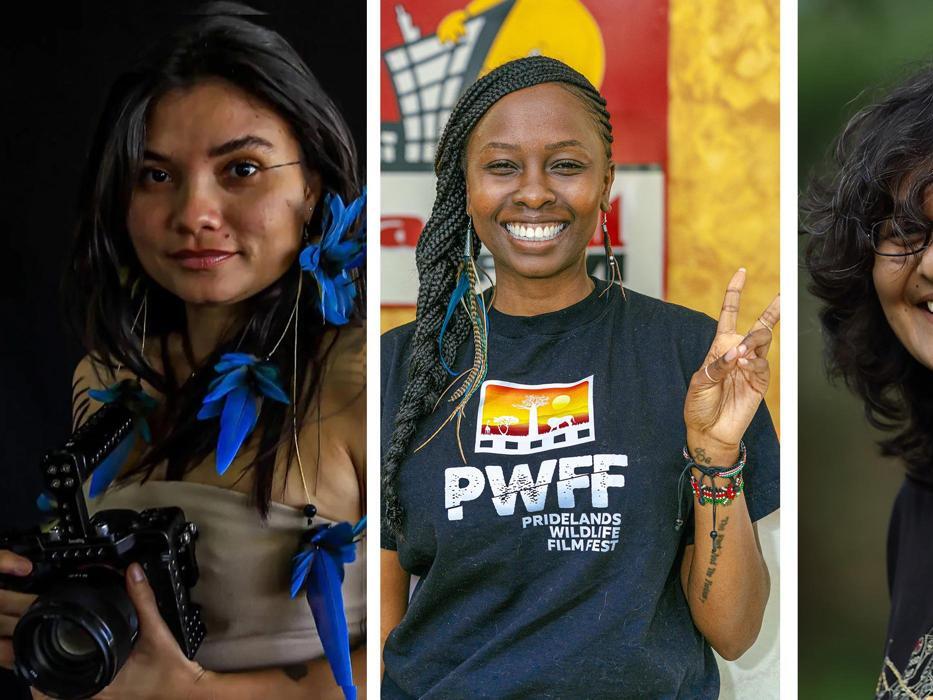Physical Address
304 North Cardinal St.
Dorchester Center, MA 02124
Physical Address
304 North Cardinal St.
Dorchester Center, MA 02124

“There’s that mindset that we won’t deliver because we’re Africans,” says Tande, 37. “It has been such a slap in the face because I really had faith in the film industry. There is still a lot of rampant and maybe closeted racism.”
This disenfranchisement led many to shy away from careers in these fields. Determined to address this, Tande completed a film course in South Africa. She then worked as a camera assistant and directed a short documentary. In 2020, she established Pridelands Films in Kenya to connect international film crews with local talent. To further highlight the continent’s achievements, she launched the Pridelands Wildlife Film Festival (PWFF) in 2022.
Tande is starting to see change. “A lot of people are coming up in this space and really doing an incredible job despite the lack of belief in local talent,” she says. “There is a lot more interest in telling stories about wild Africa from our perspectives.”
Since PWFF’s inception, submissions have increased significantly, with this year’s entries nearly double that of the previous year. While women are still underrepresented in technical roles, some are venturing into camera operations, drone piloting, and underwater cinematography. More than ten women are excelling in writing, directing, and producing, Tande notes.
Around 100 filmmakers from Uganda, Tanzania, Kenya, and South Africa attended this year’s festival. They participated in masterclasses on securing funding, monetizing content on social media, utilizing AI in film, and thriving without expensive equipment.
The growth of African filmmakers is crucial, Tande believes, because traditionally many films fail to resonate with African audiences. “You find that they are showcasing utopia, which is not the reality on the ground,” she says. “Having African storytellers who have access to real-life experiences and communities is a way to bridge that gap.” Tande stresses that films shouldn’t just depict pristine savannahs but should also incorporate the reality of changing African lives.
A prime example is Living with Lions (Kuishi na simba), directed by Tanzanian cinematographer Erica Rugabandana. Tanzania, home to 40% of the world’s remaining wild lions, faces challenges as 60% of these lions live outside protected areas, leading to human-wildlife conflicts. The film follows Rugari and his family, whose village and livestock are threatened by lions during the dry season. “Our people were represented. The struggles they face with these lions were captured, and solutions came from the people. It wasn’t about being lectured about how to live with lions,” Tande explains.
“These are stories reflective of our lives and struggles, and they celebrate us instead of vilifying us,” Tande continues. She acknowledges that female wildlife filmmakers in Africa remain few due to high training costs, technical challenges, and a lack of career visibility in schools.
However, their involvement is essential. “I feel like, as women, we have interesting ways of telling these stories,” Tande says, highlighting films like Portrait of a Ranger: Connie by Jane Okoth, which profiles Kenya’s first female ranger, and Ndossi by Kristina Obame, set in Gabon’s rainforest and blending folklore with immersive soundscapes. “These films, told through the female African gaze, are imbued with depth and emotion, breaking away from conventional storytelling.”
“We are gradually making progress,” she says. “We need support and trust from production companies and must be given opportunities to contribute to the stories they are eager to tell. Let us be part of the process rather than a mere tick in the diversity box.”
In Brazil, Indigenous photographer and filmmaker Priscila Tapajowara often mentions the river when describing her upbringing in Santarém, where the Amazon and Tapajós rivers meet. “I grew up in close connection with the river, with nature,” she recalls. Tapajowara, 31, from the Tapajó people, found her passion for photography while observing activists protecting their sacred river from industrial threats. Her father’s encouragement led her to photograph Indigenous communities and eventually study audiovisual production in São Paulo.
Her first film job involved working on a documentary about the Guarani Indigenous community’s fight in São Paulo. Her work has since focused on Indigenous experiences, but she also enjoys sharing the spiritual stories she heard from her elders. “I like to show the cosmovision, the knowledge, and spiritual beliefs of the peoples of the Lower Tapajós,” she says.
Tapajowara emphasizes that Indigenous culture is crucial for the environment. “If it weren’t for our ancestral knowledge, the forest wouldn’t be standing, the rivers wouldn’t be alive,” she notes. “We are a part of nature.”
Her web series Ãgawaraitá (2022) reflects this symbiosis, depicting forest dwellers’ interactions with nature’s spirits. Tapajowara plans a second series and a feature-length film exploring these themes. She also organizes film festivals, runs a media collective, and offers audiovisual courses to Indigenous and remote communities across Brazil.
“Communication is a powerful tool,” she says, advocating for Indigenous narratives in media. Encouraging young Indigenous women to follow in her footsteps, she notes, “When I started, I don’t remember seeing many other [Indigenous] women. Now there are lots of girls making films.”
Indian conservation filmmaker Rita Banerji’s journey began with an old Agfa camera given to her by her father. After immersing herself in various filmmaking roles, she fell in love with creating environment and wildlife films, eventually establishing Green Hub in India. This fellowship program trains Indigenous and rural youths in visual storytelling, addressing interconnected issues of conservation, community wellbeing, and rural development.
Banerji highlights the importance of community involvement in conservation and has founded Dusty Foot Productions to further these efforts. Green Hub provides extensive training, empowering women and fostering confidence in their filmmaking skills. Banerji’s work, recognized by Ashoka Fellowship, emphasizes persistence and patience for aspiring filmmakers. “There are many opportunities now, but one needs to be persistent and not give up,” she advises.
Source: The Guardian



